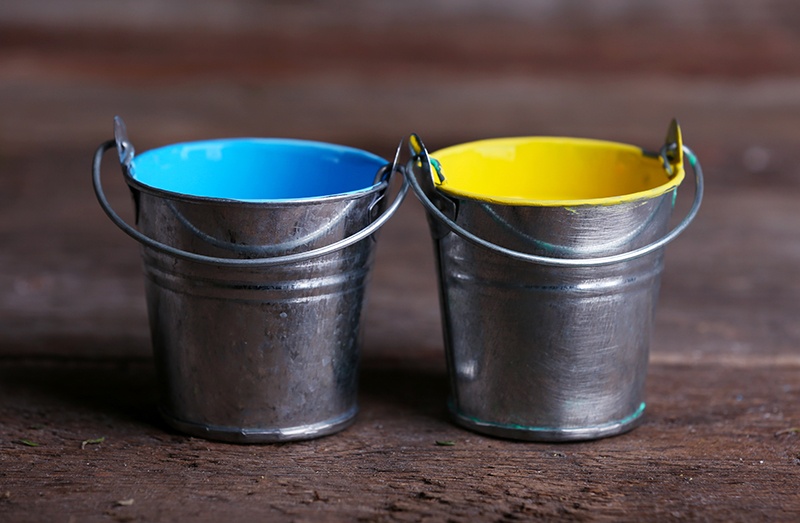15 May 2023
As your company’s patent portfolio grows over time, it’s important to understand how your own previously filed patent applications can become prior art against your later-filed patent applications. This is especially critical for companies who are developing larger portfolios with several patent applications around a core technology area.
To help you navigate the law in this area, I’ll provide a detailed look at how prior art is defined under US law—as modified in 2011 by the America Invents Act (AIA). We’ll be deep diving into some pretty nerdy stuff about one particular statute — consider yourself warned!
I’ll then give practical steps you can take if your company’s own previously filed patents are cited in a rejection against one of your company’s later-filed patent applications.
HOW DOES THE AIA DEFINE PRIOR ART?
Federal statute 35 U.S.C. 102 — which defines what is considered prior art under U.S. law — as amended by the AIA, effectively creates two “buckets” of prior art. These are defined in Sections 102(a)(1) and 102(a)(2) of the statute.
Under both Sections, when you file a new patent application, your company’s previously filed applications can potentially be applied as prior art against the new application. Specifically, if the two applications have similar subject matter, the previously filed application could be used to reject the new application as either being “anticipated by” or “obvious in view of” the previously filed application.
But the AIA also provides exceptions in Section 102(b) for each “bucket” of prior art. In other words, certain types of information may meet the general definitions in Sections 102(a)(1) or 102(a)(2), but are still not considered prior art because they meet one of the specific exceptions listed in Sections 102(b)(1) and 102(b)(2) respectively.

WHEN DO OUR COMPANY’S PREVIOUSLY FILED PATENT APPLICATIONS COUNT AS PRIOR ART?
To determine which of the “buckets” your previously filed application might fall into — and whether it qualifies for an exception — use the following table:
| Prior art definition | Section 102(a)(1) | Section 102(a)(2) |
| When did the previously filed application become public? | The prior application became public (via publication or grant) before the new application is filed. | The prior application will become public (via publication or grant) at some point — whether before or after the new application is filed. |
| Who are the listed inventors? | The definition applies regardless of inventorship. | The application must name at least one inventor who’s not an inventor on the new application. |
| Which statute provides exceptions to this definition of prior art? | Section 102(b)(1) only | Section 102(b)(2) only |
| How are the exceptions* determined? | 1. Earliest date of publication 2. Listed inventors | Ownership of the application |
* We’re only considering the exceptions that are most relevant for the scenario considered here. Be aware that there are other exceptions that could apply in some limited circumstances.
In short, when you’re developing a strategy for a new application, you may need to take advantage of the exceptions in Section 102(b) if both of the following are true:
- One of your previously filed patent applications qualifies as prior art in either “bucket,”
AND - The subject matter is close enough that it could weaken your arguments for patentability.
So let’s look at when the exceptions apply, how to deal with them strategically when filing an application, and how to invoke them when responding to an office action.
SECTION 102(A)(1): DOES OUR PREVIOUSLY FILED PATENT APPLICATION COUNT AS PRIOR ART?
If your previously filed patent application became public (via publication or grant) before the new application is filed, then the previously filed patent application is prior art Section 102(a)(1), unless it qualifies for one of the exceptions under Section 102(b)(1).
For sophisticated companies who are developing large patent portfolios, the exception that is most likely to be useful is the first one, provided in subsection (b)(1)(A) of the statute. To determine whether that exception applies, follow this analysis:
Earliest Date of Publication
When did the content of the prior application first become public (via publication, patent grant or otherwise)?
If the prior application’s earliest date of publication was more than one year before the effective filing date of your new application, then you can stop there. Any application that was published or patented more than one year before you file your new application is prior art — no exceptions apply.
If the prior application’s earliest date of publication was less than one year before the filing date of your new application, then you might be able to remove the prior application as prior art under the exception provided in Section 102(b)(1)(A).
Listed Inventors
Section 102(b)(1)(A) provides an exception for a “grace period inventor disclosure,” which is a disclosure made by an inventor within one year before the new application was filed.
In other words, if the material affecting patentability from the prior application was contributed by an inventor on the new application, then that material is not prior art.
There are three possible scenarios:
- All inventors from the prior application are also inventors on the new application. Because everything in the prior application was disclosed by an inventor on the new application, you meet this exception — your prior application does not count as prior art.
- No inventors from the prior application are also inventors on the new application. Because nothing in the prior application was disclosed by an inventor on the new application, you do not meet the exception — your prior application qualifies as prior art.
- Some of the inventors from the prior application are also inventors on the new application. In this case, you have to figure out (if possible) which inventors from the prior application contributed the information that affects the patentability of the new application.
- The prior application does not count as prior art if and only if the relevant disclosure in the prior application was made by an inventor on the new application.
- If you can’t determine who contributed the relevant subject matter, then the prior application will count as prior art.
How to Take Advantage of the Exceptions in Section 102(B)(1)
If you haven’t filed the new application yet, and the inventors on the prior application are still with the company, consider adding some of their contributions to the new application so that they can be properly listed as inventors on the new application.
Overcoming USPTO Rejections Based on Section 102(A)(1)
When examining the new application, the USPTO will probably issue a rejection based on the previously-filed patent application. To overcome the rejection, you will need to submit a declaration or affidavit (under 37 CFR 1.130) stating that the disclosure in the prior application was made by an inventor on the new application.
SECTION 102(a)(2): DOES OUR PREVIOUSLY FILED PATENT APPLICATION COUNT AS PRIOR ART?
If your previously filed patent application will become public (via publication or grant) at some point — whether before or after the new application is filed, then the previously filed patent application is prior art Section 102(a)(2), unless it qualifies for one of the exceptions under Section 102(b)(2).
For sophisticated companies who are developing large patent portfolios, the exceptions that are most likely to be useful are the first and third ones, provided in subsections (b)(2)(A) and (b)(2)(C) of the statute.
Ownership of the Patent Application
The prior application meets the exception in Section 102(b)(2)(C) if, as of the filing date of the new application, both the prior application and the new application are owned by (or subject to an obligation of assignment to) your company.
In most tech companies, all inventions would be owned by the company and all patent applications would be subject to an obligation of assignment to the company. Therefore, unpublished prior applications typically wouldn’t count as prior art due to the exception in Section 102(b)(2)(C).
How to Take Advantage of the Exceptions in Section 102(b)(2)
Make sure to document ownership of all your patent applications in a timely fashion. Otherwise, you may end up creating unnecessary prior art against your own patent portfolio. For one, your inventors should execute assignments when filing patent applications.
For another, your inventors should complete and sign invention disclosure records (IDRs). IDRs help document the inventor’s obligation to assign the invention to the company. This can be useful if, for example, the inventor leaves the company before they can file a patent application or execute assignments.
Even if you can’t properly document common ownership (or in the event that the two applications are not commonly owned), you can also utilize the exception in Section (b)(2)(A) based on inventorship — similar to the exceptions discussed above for the first “bucket” of prior art laid out in Section 102(b)(1).
Overcoming USPTO Rejections Based on Section 102(a)(2)
When examining the new application, the USPTO will probably issue a rejection based on the previously filed patent application. To overcome the rejection based on the exception in Section 102(b)(2)(C), you need to submit a statement of common ownership.
Specifically, in responding to the rejection, you’ll need to provide a statement that “the disclosure of the subject matter on which the rejection is based and the claimed invention were owned by the same person or subject to an obligation of assignment to the same person not later than the effective filing date of the claimed invention.”
The statement of common ownership doesn’t have to be provided as a formal declaration or affidavit; for example, you can put it in the remarks section of your office action response.
To overcome the rejection based on the exception in Section 102(b)(2)(A), you need to submit a declaration or affidavit (under 37 CFR 1.130) stating that the disclosure in the prior application was made by an inventor on the new application.
HOW CAN WE DEAL WITH OTHER TYPES OF PRIOR ART?
Keep in mind that this post only deals with previously filed patent applications. If the content of your patent application was also published elsewhere, you will need to analyze that publication separately. In other words, you should be aware of all the ways that the same information may have entered one of the “buckets” of prior art, other than by virtue of being a previously filed application.
In our free eBook, “Prior Art and the Patent Process,” we take a deep dive into the other types of prior art that could affect your patents and applications — and what you can do about it. Download it now!
MINIMIZE THE RISK THAT YOU’LL ENCOUNTER UNEXPECTED PRIOR ART. HERE’S WHAT SMART TECH COMPANIES NEED TO KNOW.
But what should you do if you discover prior art against your invention? Download our FREE eBook to find out. Learn the following:
- How does the industry define prior art?
- How can you do an effective prior art search — and can you do it yourself?
- How will discovering prior art affect the claims in your patent application?
- What steps can you take to avoid unexpected prior art?
- How can you avoid accidentally creating prior art against your own patents and applications?
Walk away equipped with smart strategies to navigate common prior art obstacles during the patent process.
Fill out the short form on this page to download this eBook today!
GET YOUR FREE EBOOK

Michael K. Henry, Ph.D.
Michael K. Henry, Ph.D., is a principal and the firm’s founding member. He specializes in creating comprehensive, growth-oriented IP strategies for early-stage tech companies.

